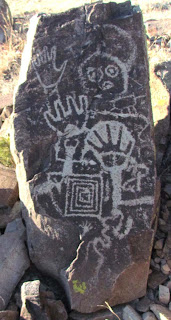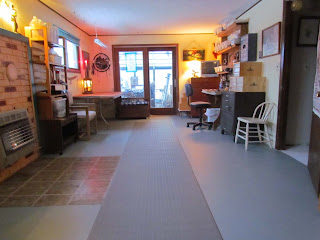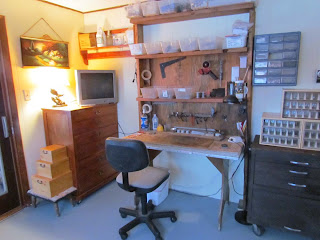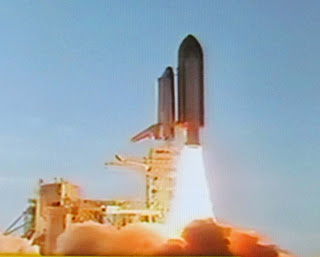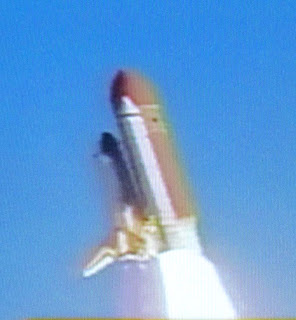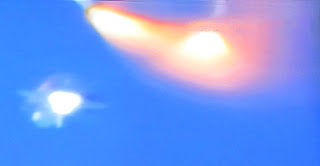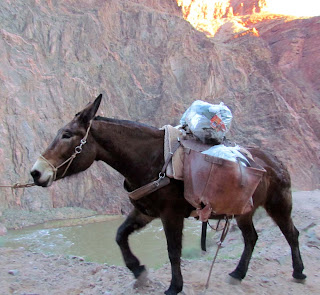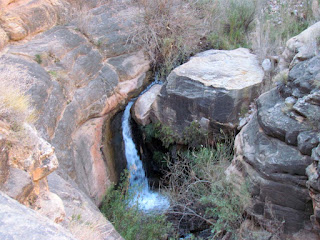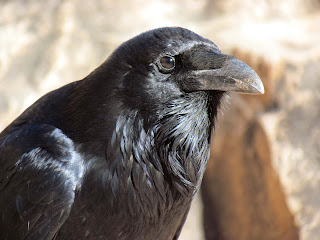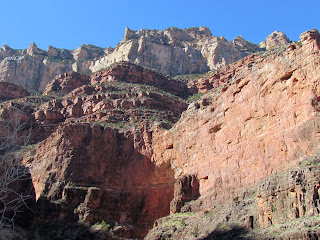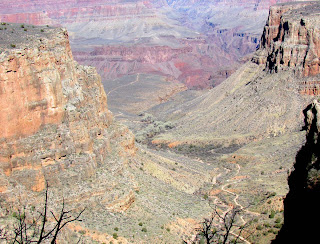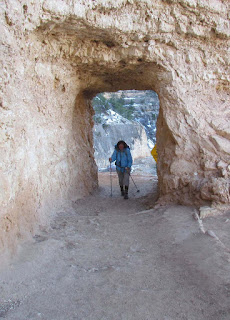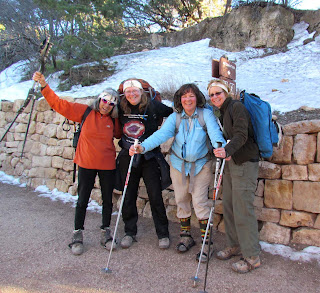The morning after we climbed up the Grand Canyon, friend Fhylster had to get up early and leave to catch her plane in Flagstaff. We had breakfast, packed the car, and hit the gift shops to buy a few souvenirs. Then we drove to Flagstaff to drop Wendy off, who had a 5:30 a.m. train the next day. Here is a shot of Humphreys Peak located in the Kachina Peaks Wilderness, which is the tallest point in Arizona at 12,643 feet.

Helen and I continued south to attend the Tucson Gem and Mineral Show. If you count all of the satellite shows that have sprung up in the area, there are more than 40 venues which make it the largest gem show in the world. This event has grown from a "club show" to a major exhibit for collectors and enthusiasts from around the country and the world. Showcased here are the best gems, minerals, jewelry, lapidary and publication dealers from around the world. Also displayed are items from private collections and renowned museums worldwide, including the Smithsonian Institution and the Carnegie Museum of Natural History.
It all started in 1955 when a group of mineral collectors and rock hounds from the Tucson Gem & Mineral Society held a free exhibition at a local elementary school, open to the public. This show was an immediate hit, prompting organizers to make it an annual event.
The most important factors in building the show's early reputation were the variety and quality of the specimens on display. The show is known for bringing in prominent gem, mineral and fossil displays from major museums. Each year, a mineral or group of minerals is designated as the show's theme mineral. In the recent past, the show has highlighted minerals from Asia, Africa and China.
As a result of the interest generated by the original show, satellite shows have proliferated all over the city. These shows cater to the interests of the growing number of people coming to town. First-time visitors to the show are amazed at the number of dealers and variety of things available for sale. We only went to two of the more than 40 venues. In total the showcase attracts an estimated 55,000 people to Tucson in a two-week period.
Amazing mineral statues.

The discoverer and owner of the Ocean Jasper mine, as well as the first Polychrome Jasper mine, had these incredible tables made. They are too expensive for me to hold in inventory, but if anyone is interested in placing a special order, the retail cost is between $1,200 and $1,600 each, plus shipping (and sales tax if you live in Michigan. The first two are made from Polychrome Jasper.


This table top is made from Ocean Jasper.

Ocean Jasper specimens for sale by Paul, the owner of the Ocean Jasper mine. The original deposit has been mined out for several years, but Paul still has some left in his warehouse. The price keeps going up, up, up. This year I only bought 3 or 4 museum quality specimens and one sphere -- all of which are for sale.

One of my other favorite vendors had some amazing Labadorite specimens. I do have several of these that I bought and have available for sale.

I also purchased some new Polychrome Jasper specimens -- not the big one, though, that is the second picture below. That specimen is three feet tall. It didn't even have a price tag on it.


More miscellaneous shots from around the Electric Park venue.
















